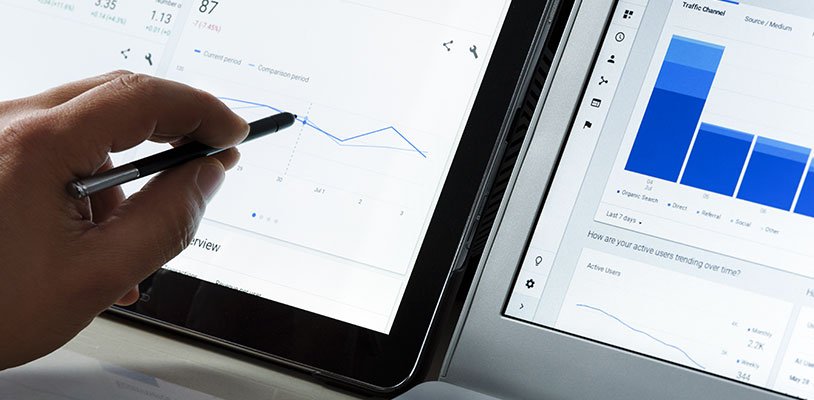In late 2019, Google Ads introduced a new target group selection method that has quietly improved the PPC game for marketers. Say what you like about Google ads, but when it comes to clicking and collecting payments, they set the pace for leading Google Ads agencies in Gurgaon and the country as a whole.
Google made this update without really telling anyone what was going on, but it just changed everything for all of us. In fact, Google has been making these updates for some time, though they haven't really said what's going on.
 This article is intended as an introduction to the new Google Ads Targeting Update for PPC ads. However, to understand this new supplement, it may be useful to know what options are available and how to use them. This update for target groups is actually a big change for pretty much everyone who runs PPC advertising.
This article is intended as an introduction to the new Google Ads Targeting Update for PPC ads. However, to understand this new supplement, it may be useful to know what options are available and how to use them. This update for target groups is actually a big change for pretty much everyone who runs PPC advertising.
Understanding Remarketing Lists for Search Ads (RLSA)
RLSA was first introduced in Google Adwords in 2013 and is still a powerful tool today. If you have ever seen an advertisement for a product that has been viewed but not purchased, you know the potential for targeted remarketing. By using a remarketing list in Google Ads, your bid audience can be tailored specifically to those who have already visited your site. RLSA can be used to:
- Craft custom bids for users on your remarketing list, who are interested in keywords you’re bidding on.
- Create search ad groups that showcase ads on the display network if a user is on the list and is searching for your keywords at the same time.
Retargeting is a well-known approach to obtaining repeated user definitions, and it is one of the most effective forms of advertising. You can promote exclusive offers via Google Ads and RLSA, and you can do so with accessories and extras that you would not normally promote via PPC. For example, if your customer has already purchased your product but has not extended the warranty, you should make sure that you advertise an accessory or extra that is not normally advertised via PPC.
Leverage In-Market Audiences
As per ThinkWithGoogle, “In-Market Audiences is a way to connect with consumers who are actively researching or comparing products and services across Google Display Network publisher and partner sites and Youtube.”
 With the aid of In-Market Audiences, you can target people who are actively looking for a product or service you offer. For example, you sell shoes to a customer, but the customer does not get a leather polish. You can choose to buy with keywords that normally have low ROAS, in which case you have a higher chance of converting. Publish a detailed description of your product, service or product line and make it available for search advertising.
With the aid of In-Market Audiences, you can target people who are actively looking for a product or service you offer. For example, you sell shoes to a customer, but the customer does not get a leather polish. You can choose to buy with keywords that normally have low ROAS, in which case you have a higher chance of converting. Publish a detailed description of your product, service or product line and make it available for search advertising.
Google AI-based algorithms allow you to use targeted search results to view ads and videos when someone searches for related terms. If you target users based on their intentions, you have the potential to have your brand seen by someone who might not have seen it otherwise. Yes, they may not have been looking for the keyword, but what can you do to market it to the said audience?
- Address an audience based on their interests with the help of Google's extensive data.
- Moving in the middle of the search funnel near the decision could help to drive the shift to niche search.
- Use Affinity Audiences. Google Ads lets you use Affinity and Custom Affinity Audiences to appeal exclusively to searchers.
- Demographics can vary widely and are not based on age or even geographical location, but rather on other factors such as age, gender, race, ethnicity, level of education, etc, hence it is crucial to keep diverse inclusivity in mind.
Affinity Audiences and Targeting
As you might have guessed by using targeting techniques, affinity targeting is the best way to boost your campaign's performance. Also, if you want to increase your brand awareness in a particular niche, affinity individuals can do that. Promoting your product, service, brand, or a particular product or service in your niche works well with affinity marketing. They can be classified with parameters such as search history, age, gender, race, ethnicity, education level, and so on.

- It can also be very useful to address your competitors and to design your ads in a way that makes them more relevant to the searcher.
- For custom audiences, Google gives marketers the ability to place ads for people looking for a particular term (SERPs). If you are actively researching something, you can rely on the Search Engine Results Pages (SERPs) as they provide all the answers.
With Custom Intent Audience, you need to create your own audience and add the keywords you're looking for. This is a bit more precise than target groups, but it is still very similar in the way it can be customized.
If you are targeting a target group that is actively looking for something, you can use the display network to increase brand awareness, capture competitor search terms, or highlight your own offerings and expertise. You can also use it for retargeting lists with a wide range of target groups as well as for a variety of other types of advertising.
If you’re brand eager to avail performance marketing services or are willing to hit the marketing bullseye with the aid of GA audience targeting, we believe that this article will be helpful for you. We wish you all the luck!
















